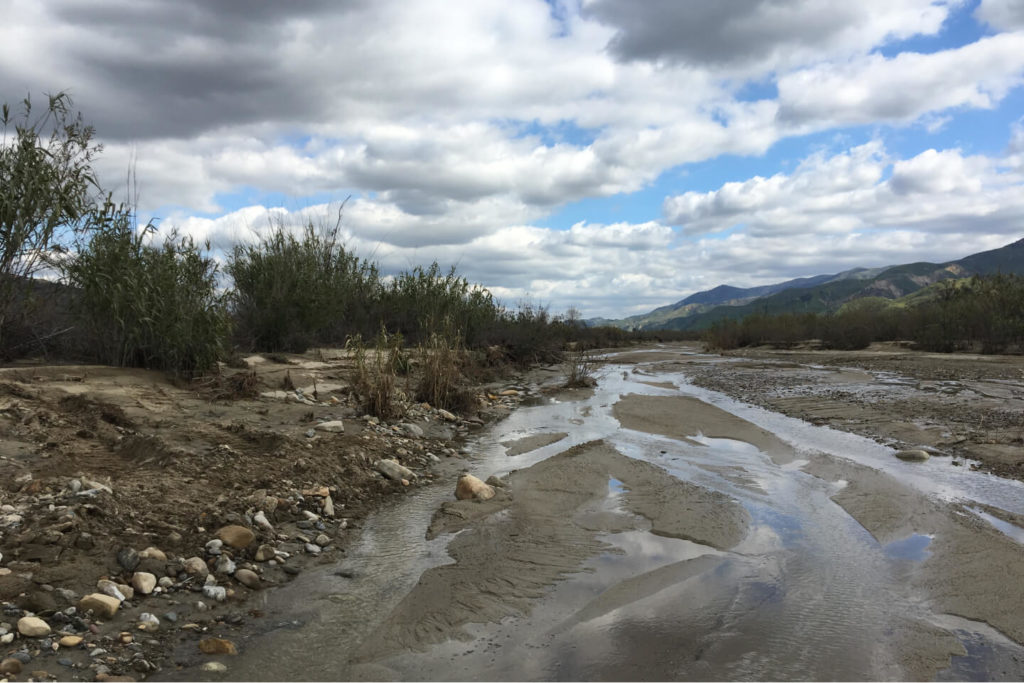(2020-2021)
Sespe Cienega
Restoration and Public Access Planning Project

Introduction
Historically, artesian flows along the Santa Clara River near the City of Fillmore supported one of the most extensive freshwater wetland complexes in the lower watershed referred to as the “Cienega”, or “Sespe Cienega.”
By 2005, the majority of the wetland area had been converted to farmland. Since 2017, the California Department of Fish and Wildlife (CDFW) has owned a majority of the Sespe Cienega, consisting of the California Watercress property and the Fillmore Fish Hatchery.
The goals of this planning effort were to develop working plans to restore riparian and wetland habitats and natural river function to this property under permanent protection by CDFW and to provide public access to the river for the communities of Fillmore, Santa Paula, and Piru.
Restoration of riparian habitat at the project site included removal of invasive giant reed (Arundo donax), and replacement with willow, cottonwood, and other riparian and wetland vegetation that had largely been lost on the property.






The restoration will benefit wildlife, including federally-listed species such as least Bell’s vireo (Vireo bellii pusillus), southwestern willow flycatcher (Empidonax traillii extimus), western yellow-billed cuckoo (Coccyzus americanus occidentalis), and other sensitive species such as white-tailed kite (Elanus leucurus), northern harrier (Circus hudsonius), southwestern pond turtle (Actinemys pallida), two-striped garter snake (Thamnophis hammondii), and southern black walnut (Juglans californica).
In addition, the federally-listed Southern California steelhead (Oncorhynchus mykiss) should benefit from the removal of invasive species on the property, including giant reed. The 2012 Southern California Steelhead Recovery Plan identifies the Santa Clara River watershed as a Core I or highest priority watershed for recovery of the steelhead population.
Final Products
Several products were developed as part of the initial and finalized design process, including:
- A comprehensive literature review (2020) of Sespe Cienaga ecology, land management history, and surrounding communities.
- A preliminary conceptual design (2020) to outline priority ecological functions, restoration priorities, and public access initiatives.
- A completed technical plan (2021) report and comprehensive maps, finalizing the hydrology, vegetation communities, access trails, and overall layout of the completed wetland, riparian, and upland systems.
